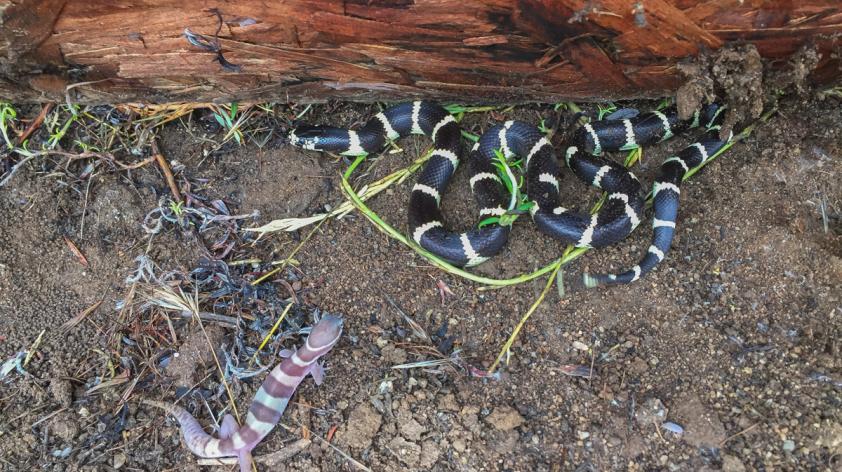
Stinknet Invasion
There is a weed invasion in California, and it stinks. Globe chamomile or Stinknet Oncosiphon piluliferum, is a small, herbaceous plant with a noxious odor that is native to South Africa. Although the exact date of introduction to the United States in unknown, the plant is believed to have first been introduced in Phoenix, Arizona as a cultured desert habitat specimen.
From Arizona it spread to Southern California, possibly via equipment and fill material. It was also introduced in Victoria, Australia. The species does very well in dunes, scrub and chaparral habitat from sea level to 2000 feet in elevation.
Unfortunately, the Safari Park is a perfect place for the plant to grow and it was first noticed at the Safari Park in 1997 by a UC Riverside researcher. It continued to slowly spread along the south-facing slopes of the Park, but the rains of 2017 enabled a massive outbreak of the plant.
The Safari Park Biodiversity Reserve (SPBR) contains the 800 acres of coastal sage scrub and other habitats that surround the Safari Park. For over 20 years, researchers from the Institute for Conservation Research have studied the reptiles, amphibians, plants, birds, and other wildlife of the SPBR.
In 2005, I began to monitor reptile, amphibian and small mammal populations in the SPBR using cover boards. This is a technique in which plywood is laid out in various areas of the park and over time, small vertebrates begin to use the wood for cover. It is a very simple and inexpensive way to monitor animals that may be difficult to monitor through visual surveys, such as amphibians, reptiles and small mammals.
In addition, the plants around the cover boards are surveyed about every four months in order to get an idea of what species of plants the different animal species are associated with. The project has been a great success and in some areas, it is not uncommon to find over 50 animals in just a few hours under the cover boards.
During my surveys I started to notice the stinknet plants were spreading, but after the above-average rains of 2017, the spread was unbelievable. Large areas of habitat were covered by mats of the plants, and their round, yellow heads. Some of my cover boards were completely surrounded by the weed.
I started to notice that some of the best boards for finding animals were not being used by any animal species at all. Smaller native plants were being taken over and often completely covered by stinknet.
Drought periods are difficult on small animals and my surveys have revealed that there is definitely a reduction in the abundance of small vertebrates under the cover boards during dry years. In addition, it is possible that small vertebrates may leave areas where the stinknet has invaded. Without analyzing my data, I cannot be sure if this is true yet, but time will tell.
In 2018, the Plant Conservation team at the Institute for Conservation Research began a large-scale plan to remove stinknet from the Safari Park.
Because the plants each produce hundreds of tiny seeds, the program will be ongoing and the only way to remove the plants is by manually removing the entire plant. The program will be very expensive and labor-intensive, but it is a testament to our strong commitment to saving our native wildlife and habitats.
Photos by Jeff Lemm.













